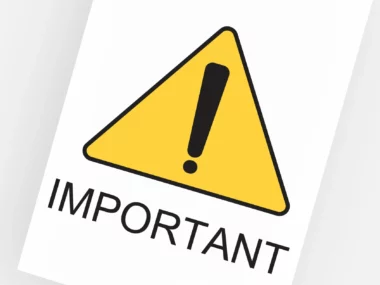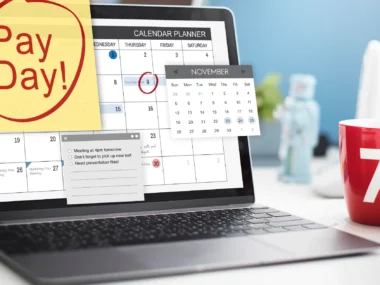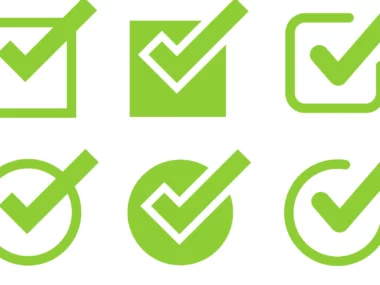Table of Contents
Personal loans have been known to come in handy when you need to settle expenses such as medical bills, funeral expenses, home renovations, and so on.
When you find yourself in a pinch and need a quick way out, there are several lenders of personal loan lenders that you can turn to, such as banks, online lenders, and so on.
However, what makes peer-to-peer lending different from those other lenders is the fact that the many existing P2P platforms eliminate the need for an intermediary and connect you directly with individual investors who are willing to lend you money as long as you agree to pay it back with interest.
These loans are easily accessible through an online platform that gives you numerous loan options and charges both you and the investor a service fee.
Whether you are a potential borrower or a possible investor, you must understand how this financial option works, its upsides and downsides, its eligibility requirements, and so on, in 2024 before diving into it.
Peer-to-Peer Lending in 2024: See Fresh Perspective
What is peer-to-peer lending?
This is a form of financial technology that connects borrowers with lenders or investors. It is a platform that allows individuals and businesses who want to borrow money to meet people who are willing to invest in a loan, with the hope of getting a return on what they invest. It makes it possible for borrowers to get loans directly from a lender without going through financial institutions such as banks.
Also known as social lending, this financial option has been in existence since 2005.
It is an alternative option for borrowers who are unable to get a loan from traditional banks. The website dictates the rates and loan terms.
The owner of the platform is not the one doing the lending, they only connect borrowers with individual investors who would like a more bountiful return on their cash savings than a bank savings account would offer them.
Borrowers have access to both secured and unsecured loans, although most loans offered by P2P lenders are unsecured.
How Peer-To-Peer Lending Works
The peer-to-peer lending process is incredibly simple. Every step is carried out online via an online platform. How it works is that a borrower who needs a loan fills out an online application on the lender’s website; the lender reviews their application, checks out their credit rating, and assigns an interest rate; and the applicant waits for their application to be approved.
Once approved, the borrower is presented with the available options from the investors according to their (the borrower’s) credit rating and assigned interest rates, and they can select their preferred option.
After receiving the needed funds, the borrower then begins making fixed monthly payments until the debt is paid in full. The platform usually charges both the borrower and investor a service fee.
Features of Peer-To-Peer Lending
1. Online: Everything about P2P lending is done online. From applying for a loan to sending the required document to making monthly payments, everything is carried out on the lender’s website.
2. Origination fee: Most P2P lending platforms charge an origination fee of between 1% to 10% of the loan amount, which is meant to settle the cost of processing the loan.
3. Slow funding: Compared to personal loans from banks and online lenders, funding from some P2P lenders might take more time.
4. Investment platform: If you have some money that you would like to grow, P2P platforms offer investment opportunities that you can take advantage of.
The eligibility requirements of peer-to-peer lending
Below are some of the eligibility requirements of peer-to-peer lending:
1. A good or fair credit score.
2. Proof of employment.
3. Old tax returns.
4. Documents such as copies of your government-issued ID and Social Security number (SSN).
5. Tax forms, such as W2s.
6. Recent pay stubs.
7. Current bank statements.
Upsides of Peer-To-Peer Lending For Borrowers
1. Attractive interest rates: You could get a loan with a low-interest rate if you have a good credit score. The interest rates offered on P2P lending websites are often lower compared to the ones offered by banks and building societies.
2. Fast and convenient: With just a few clicks on your phone, you can access a P2P lending website, view the offers available, and pick the one that you desire and qualify for.
3. Diversity of use: The funds obtained from these websites can be used for a variety of purposes such as debt consolidation, medical expenses, property development, and so on.
4. Availability of smaller loan amounts: Unlike some other lenders who set a high limit to the amount that borrowers can take, P2P lenders often offer smaller loan amounts to help you cater for minor expenses.
5. Loans for borrowers with bad credit: Some P2P lenders offer loans to borrowers with poor credit scores.
6. An alternative option: If you are having trouble getting a loan from banks or building societies, you can turn to P2P lenders.
7. Unsecured loans: The loans offered by P2P lenders are usually unsecured, meaning you don’t need to provide collateral. This eliminates the risk of losing your property if you are unable to repay the loan.
8. Flexible repayment: If after borrowing, you come into a huge sum of money and would like to settle your debt before the date that was agreed upon, P2P lenders will allow you to do so without penalizing you.
Downsides of peer-to-peer lending for borrowers
1. Potential lawsuit: If for one reason or the other, you are unable to repay the loan, a P2P lender might decide to send the debt to a debt collection agency, and you might eventually find yourself in court.
2. Inaccessible offline: P2P loans can only be accessed online through their various websites.
3. Maximum amount: The highest amount that you can borrow from a P2P lending website is £35,000. This is a disadvantage for borrowers who need a lot more than that to cater for their expenses.
4. Extra fees: You may have to pay extra fees in addition to the interest rate charged on the loan. This could include an origination loan.
5. Dissimilar interest rates: Different lenders charge different interest rates, so if you need to borrow from more than one lender to cater for your expenses, they might charge you dissimilar interest rates for the same amount of money.
Upsides of peer-to-peer lending for lenders/investors
1. High-interest rates: As a lender on a P2P lending website, one of the many benefits available for you is the possibility of earning up to 9.83% yearly in interest rates. This makes the idea of investing on these platforms very enticing.
2. Financial protection: In case borrowers fail to repay their debt, certain P2P websites have contingency funds meant to protect you (the investor). With that said, be sure to conduct thorough research before choosing a website to invest your money.
3. Versatile loan purposes: P2P lending websites provide investors with various investment options where they can choose to put their money. You can choose to fund housing developments, small businesses, and so on.
4. Low investment amounts: You don’t necessarily need to have a lot of money before you can invest in a P2P website. You can put the little you have there now to start earning interest, and then increase your investment as time goes on.
5. Navigable platforms: P2P websites are usually user-friendly, making it easy for both old and new investors to use.
6. Secondary market: If you are ever in a pinch and need to get your hands on some cash, you can sell some of your loans to other investors and get the needed funds.
7. Additional FSCS Safeguard: Certain websites offer the protection of the Financial Services Compensation Scheme (FCSC), which protects your investment in case of a bank failure.
Downsides of peer-to-peer lending for lenders
1. It is risky to invest: Unlike investment types such as certificate of deposit and savings accounts that protect your money in case anything bad happens, there is no assurance that you will get back your full P2P investment if borrowers default on their loans.
2. Not FSCS protected: Another downside for investors lending on P2P platforms is that their money is not Financial Services Compensation Scheme (FCSC) protected, at least not on every website.
3. Low yield: In cases where borrowers can repay their debt earlier than expected, returns may not be as much as you would have calculated.
Factors To Consider When Comparing Peer-To-Peer Lenders
To help you make the right choice, below are certain factors that you should consider when comparing offers from peer-to-peer lenders:
1. Loan terms: Before accepting an offer from a P2P lender, one of the factors that you should consider is how long you have to repay your debt. Most platforms have loan terms of up to five years. Note that if you pick a loan with a shorter term, your monthly payment will be high but the total cost of the loan will be lower.
2. Annual Percentage Rate (APR): This is the total amount that it will cost you to borrow money. It includes the interest rates and fees charged on the loan. The APR charged on a loan is often decided by factors such as your credit score, income, debt history, and chosen loan term.
3. Collateral: Another factor to consider before accepting an offer is whether the loan is secured or unsecured. A secured loan requires collateral while an unsecured loan doesn’t. If your credit score is not good enough, you might be required to use property such as your car or house as collateral for the loan.
4. Duration of disbursement: Ensure to find out how soon the lender will disburse the required funds so you don’t get delayed. Although some lenders release funds not long after approval, others take time.
5. Origination Fees: This is the amount charged to process the loan. This is another factor to consider.
6. Minimum credit score: It is important to know the minimum credit score that you would need to qualify for a loan from a P2P lender.
7. Prepayment penalties: Also find out if there is a penalty for choosing to pay off your debt sooner than the duration agreed on with the lender.
How to apply for a peer-to-peer loan
1. Prequalification: As it has been established, everything about P2P loans is done online. The first thing to do is to find out if you qualify for a peer-to-peer loan through the site’s prequalification process. This will give you an idea of what your loan terms and APR will be if you get approved for a loan.
2. Apply: If you find the loan terms and APR acceptable, the next thing is to apply on the lenders site. The lender will review your documents and information and also do a hard credit check.
3. Wait for approval: After applying, you will have to wait for your loan to be approved. Some lenders approve faster than others.
4. Disbursement: Once your application is approved, your loan is reviewed, and once it gets enough investors, the needed funds are disbursed.
5. Repayment: After receiving the loan and using it for your desired purpose, the next step is to begin making fixed monthly payments so all the investors on your loan can get their money back.
How to Lend A Peer-To-Peer Loan
1. Open an account on your desired peer-to-peer lending website.
2. Pick your choice of investments.
3. Monitor your online account.
Best Peer-To-Peer Lenders In 2024
There are numerous peer-to-peer lending platforms out there but here are some fantastic ones that are doing well and treating both investors and borrowers right in 2024:
- Prosper.
- Funding Circle.
- Kiva.
- FundStreet.
- Fundrise.
- Lendinghome.
- FundingKnight.
- Lendified.
In Summary:
As we provide you with a Fresh Perspective on Peer-to-Peer Lending in 2024, the goal is to help you understand how to get the best from these lending platforms whether you are a borrower or an investor.






